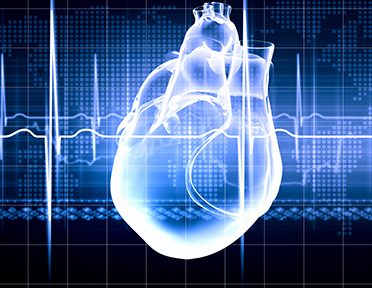
A team led by the Wellcome Sanger Institute and the National Heart and Lung Institute at Imperial College London have produced an in-depth map of the human heart cells and tissue, as well as giving insight into how they communicate with each other.
As reported in Nature, the research team used a combination of single cell and spatial transcriptomics technology to create the map, which will form part of the larger Human Cell Atlas, which plans to map all cells and tissues around the body.
The investigators have also created a computational tool called Drug2cell to assess the effects of different drugs or drug candidates on heart rate. The tool can predict new drug targets for investigation and also give insights into potential drug side effects.
“This Heart Cell Atlas reveals cardiac microanatomy in unprecedented detail, including the cardiac conduction system that enables each heartbeat, and is a valuable reference for studying heart disease and designing potential therapeutics,” said Sarah Teichmann, a senior author of the study from the Wellcome Sanger Institute and co-chair of the Human Cell Atlas Organizing Committee, in a press statement.
“An important contribution to the global Human Cell Atlas initiative, which is mapping every cell type in the body to understand health and disease, it will form the foundation for a fully integrated HCA Human Heart Cell Atlas. In addition, our suite of computational methods will help identify possibilities for repurposing existing drugs to treat diseases in other tissues.”
The map includes eight regions of the heart and 75 different cell states, for example, the cardiac conduction cells responsible for heartbeat. Spatial transcriptomics technology allowed the researchers to clarify where the cells are located and how they communicate with each other.
A number of different insights were obtained from the map, for example, in the epicardium tissue immunoglobulin G+ and A+ cells were present at high numbers suggesting they may contribute to immune defense of the heart. The investigators also discovered a relationship between glial cells in the nervous system and cardiac conduction system cells.
Using the drug2cell tool, which draws on single-cell profiles and millions of drug-target interactions recorded in the EMBL-EBI ChEMBL database, the team found that pacemaker cells (responsible for maintaining heart beat) express the target of some common medications such as GLP1 analogs used to treat diabetes and obesity. A side effect of these drugs is known to be increased heart rate, which may be at least partly due to a direct impact on pacemaker cells.
Cardiac disease is one of the biggest killers around the world. In the U.S. alone, one person dies every 33 seconds from some form of cardiovascular disease, which amounts to more than 695,000 people a year. The Heart Cell Atlas will help researchers and clinicians to learn more about this complex organ and look for new treatments for disease.
“In the future, applying drug2cell to whole-body cell atlas datasets may improve in silico screening by predicting adverse effects in cell types across all organs,” write the authors.












